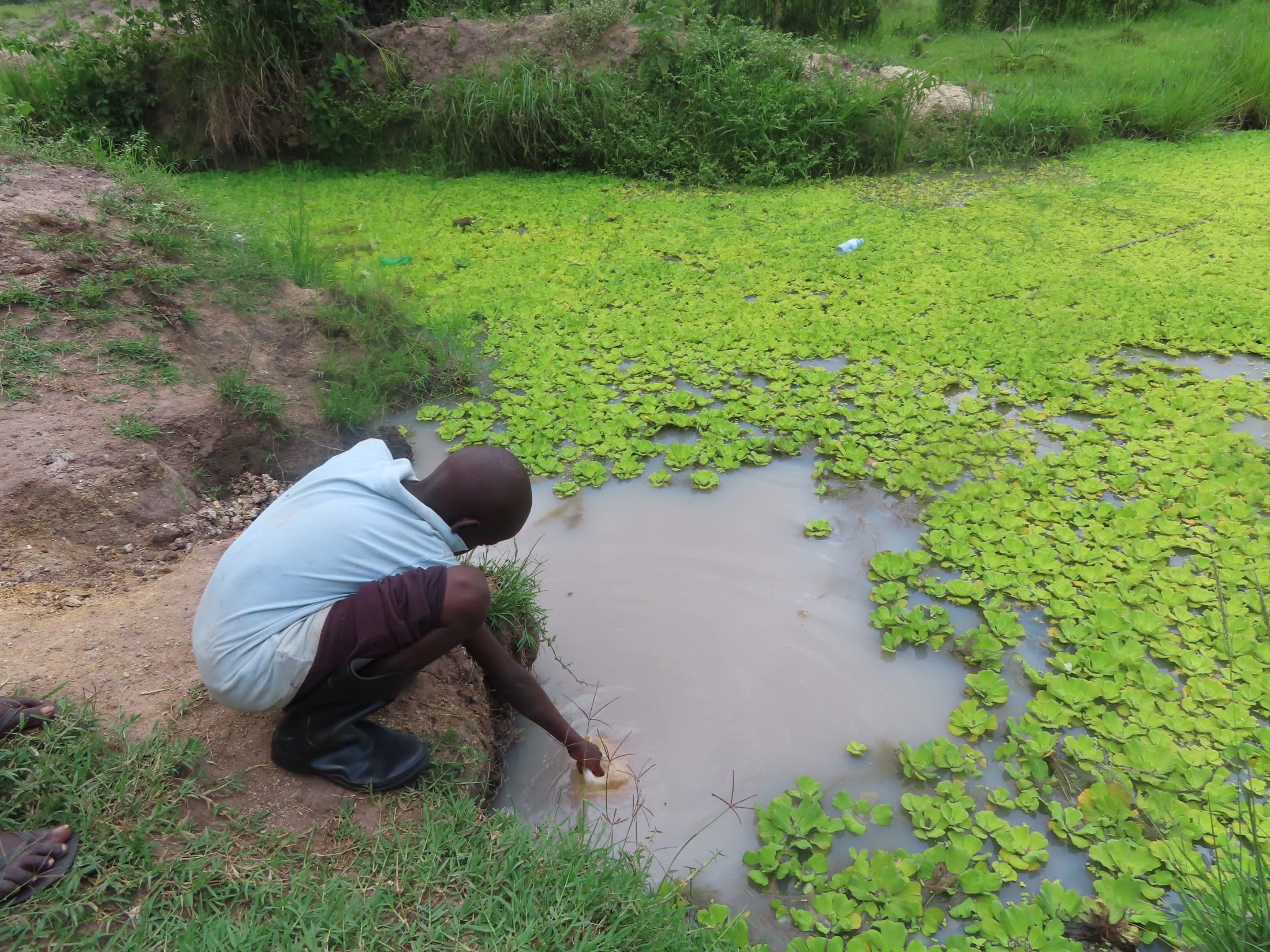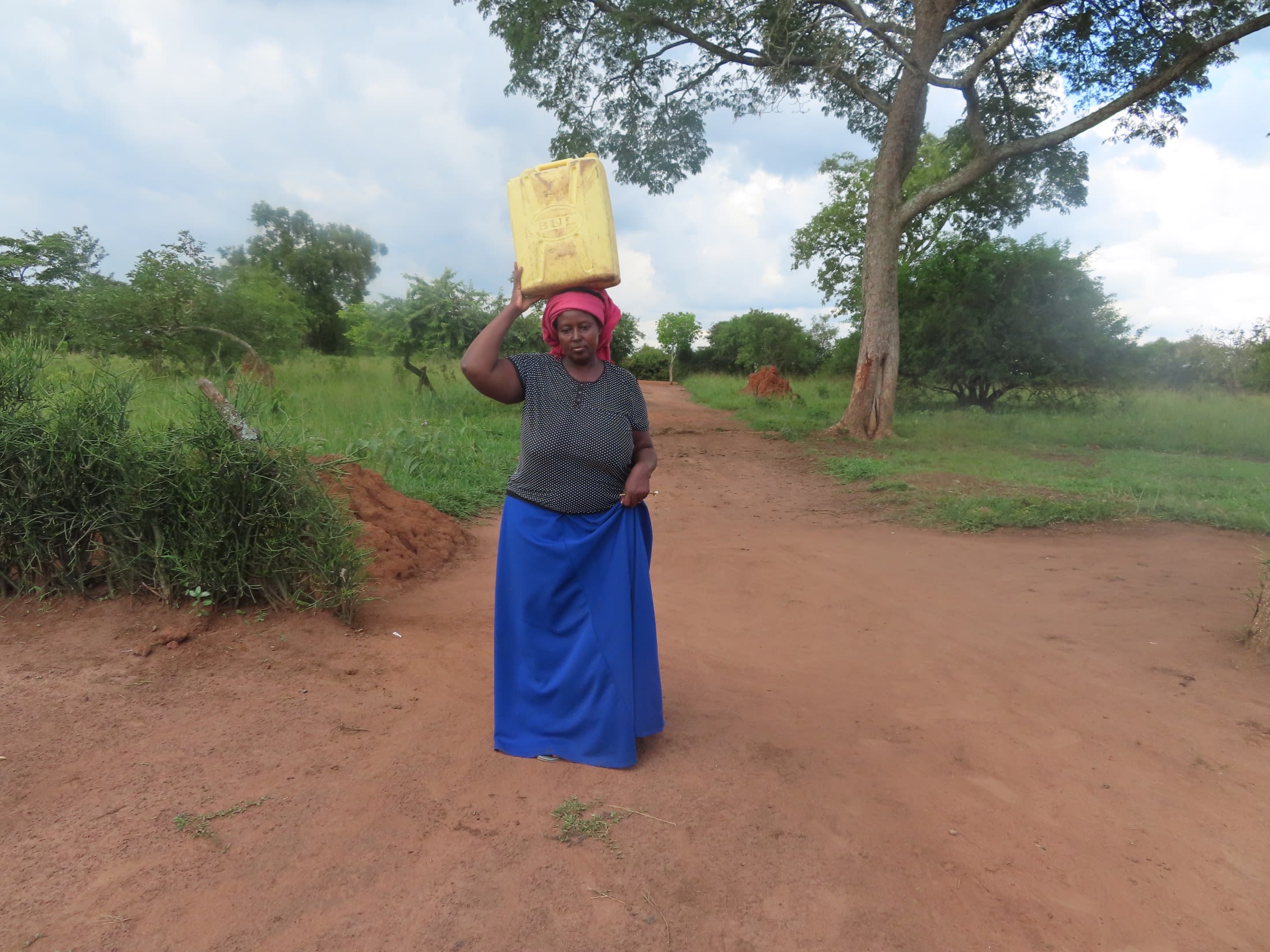Most of the families in Kihagani Kyakantu farm cattle for their livelihoods, but without water, it is nearly impossible to make a living. Therefore, the 400 people living in the community struggle every single day due to the water scarcity they experience.
The community members primarily rely on a seasonal local dam, but it is far away, and the exhausting energy and effort it takes to collect water there. Not to mention the water people work so hard to collect is unsafe to consume, leaving people ill if they choose to do so.
"I come back from school at 4:00 pm, get a simple drink, and then go to fetch water at the dam to wash my uniforms and cook food. Fetching water from the dam is risky because chances are high that a child can fall into the dam, and chances of survival are minimal. After fetching water, at around 6:00 pm, I have to enter the calves in the kraal (pen), and due to [a] series of activities, I don't get time to do my homework [or] even [a] little resting time," said 10-year-old Trevor A., shown below collecting water.

Winnie Kanyana (shown below carrying water), a 36-year-old housewife, also explained the water challenges she faces.

Winnie said, "I am a newborn mother, and sometimes I fail to clean my baby's clothes because the water from the dam can't be used for washing a baby's clothes, hence affecting the baby's hygiene."
Her solution to this was to buy many baby clothes so that even when they go some days without washing the baby's clothes, she can still have something to put on.
She continued describing the challenges she faces with her other children: "In most cases, my children come back late and already tired from school, so it becomes hard for them to go and fetch water. They end up sleeping without bathing and go to school with dirty uniforms."
Winnie concluded: "During the dry season, all the dams dry up, and accessing water becomes hard. It's only my husband who can go to the borehole because he rides there."
But her husband's trip to collect water from a borehole in the neighboring community consumes a lot of fuel, and fuel prices have skyrocketed, making it nearly impossible. When her husband isn't around, it becomes hard for the family to access safe drinking water, so they resort to buying from water vendors, which is also costly.
“Universal access to safe drinking water is a fundamental need and human right. Securing access for all would go a long way in reducing illness and death, especially among children.” - UNICEF
Everyone in this community needs a reliable, nearby water source so they can return to making an income that will adequately support their families to improve their daily lives.
Note: Our proposed water point can only serve 300 people per day. We are working with the community to identify other water solutions that will ensure all 400 people in Kihagani Kyakantu have access to safe and reliable drinking water.
Here’s what we’re going to do about it:
New Borehole
This new borehole is an exciting opportunity for this community! We work with the community to determine the best possible sites for this well.
We conducted a hydrogeological survey and the results indicated the water table is an ideal candidate for a borehole well. Due to a borehole well's unique ability to tap into a safe, year-round water column, it will be poised to serve all of the water needs for this community, even through the dry months.
Community members will help collect the needed construction materials such as sand, rocks, and water for mixing cement. They will also provide housing and meals for the work team, in addition to providing local laborers. We will complement their materials by providing an expert team of artisans and drilling professionals, tools, hardware, and the hand-pump. Once finished, water from the well will then be used by community members for drinking, handwashing, cooking, cleaning, and much more.
Training
Training’s main objectives are the use of latrines and observing proper hygiene practices since these goals are inherently connected to the provision of clean water. Open defecation, water storage in unclean containers and the absence of hand-washing are all possible contaminants of a household water supply. Each participating village must achieve Open Defecation Free status (defined by one latrine per household) prior to the pump installation for this borehole well.
This social program includes the assignment of one Community Development Officer (CDO) to each village. The CDO encourages each household to build an ideal homestead that includes: a latrine, a handwashing facility, a separate structure for animals, a rubbish pit and a drying rack for dishes.
We also implement the Community-Led Total Sanitation (CLTS) approach with each of our village partners. This aims to improve the sanitation and hygiene practices and behaviors of a village. During these sessions, village leaders naturally emerge and push the community to realize that the current practices of individual households – particularly the practice of open defecation – are not only unhealthy, but affect the entire village. CLTS facilitates a process in which community members realize the negative consequences of their current water, sanitation and hygiene behaviors and are inspired to take action. Group interactions are frequent motivators for individual households to build latrines, use them, and demand that other households do the same.
Improved Sanitation
The aim is that all households own an improved latrine. Many households do not use a latrine but use the bush. Due to open defecation, feces are spread all over the village. This leads to waterborne diseases and contamination of groundwater and surface water. Our aim is that the community is able to live a healthy life free of preventable diseases. We endeavor that at the end of our presence in the community, people will have both access to sustainable, clean water and access to sanitation. We have now organized families to form digging groups for latrine construction, and empowered them with tools to use.





 Borehole Well and Hand Pump
Borehole Well and Hand Pump
 Rehabilitation Project
Rehabilitation Project
























